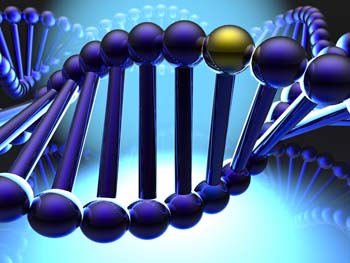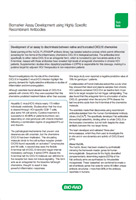
Popular topics

-
References
Lozano R et al. (2012). Global and regional mortality from 235 causes of death for 20 age groups in 1990 and 2010: a systematic analysis for the Global Burden of Disease Study 2010. Lancet 380, 2095-2128.
Casrouge A et al. (2011). Evidence for an antagonist form of the chemokine CXCL10 in patients chronically infected with HCV. J Clin Invest 121, 308-317.
Casrouge A et al. (2012). Discrimination of agonist and antagonist forms of CXCL10 in biological samples. Clin Exp Immunol 167, 137-148.
Biomarker assay development: CXCL10 in HCV infection

Approximately 130-150 million people globally are infected with the hepatitis C virus (HCV), and about 500 000 people die each year from hepatitis C-related liver disease (Lozano R et al. 2012). While the body initiates CD8+ T cell and antibody responses to combat HCV infection, these attempts are unsuccessful in a significant number of patients. Current treatment strategies involve a combination of interferon (IFN)-α2 and ribavirin or use of direct antiviral agents (DAA). However, less than 50% of patients infected with HCV respond to therapy. Moreover, HCV relapse is the most common reason for treatment failure with DAA (Meissner EG et al. 2015).
An interesting paradox
This discrepancy in treatment outcomes perplexed scientists for years. Strategies to address this puzzling observation involved transcriptional profiling and candidate molecule screens to identify proteins that could be responsible for the variation in response to HCV therapy. This led to another observation of elevated levels of the chemokine CXCL10 in patients with chronic HCV, and its expression predicted treatment failure rather than success. This finding was even more surprising because CXCL10 functions to recruit activated T cells, which are responsible for killing HCV infected cells.
The answer to this paradox came with the discovery that CXCL10 exists in two flavors— the agonist and antagonist variety (Casrouge A et al. 2011). These two variations of the protein differ by only two amino acids at the N-terminus. The consequence is that the antagonist form of CXCL10 can bind to its receptor but is incapable of initiating signaling. It was discovered that the plasma of patients with chronic HCV infection actually contains high levels of the inert form of CXCL10, which correlates with poor prognosis and treatment response. Scientists further determined that formation of the truncated form of CXCL10 is mediated by the enzyme dipeptidyl peptidase IV (DPP4, also called CD26), suggesting that a possible treatment strategy for chronic HCV could be inhibition of DDP4 activity.
So just how did scientists identify the antagonist form of CXCL10, considering the close similarity between the two isoforms? The answer—using recombinant antibodies isolated from the Human Combinatorial Antibody Library (HuCAL®) (Casrouge A et al. 2012).
HuCAL technology
The HuCAL PLATINUM® library contains over 45 billion human antibodies against just about any possible antigen or epitope, encompassing more than 95% of the antibody repertoire in humans. Using the HuCAL technology, scientists at Bio-Rad generated recombinant antibodies that would bind either form of CXCL10 but not both. This was done through a technique referred to as guided selection in a two-step process for generation of both antibodies. Using the highly specific recombinant antibodies, Casrouge et al. created CXCL10 ‘three-plex’ immunoassays for quantifying total, agonist and antagonist forms of the chemokine. These assays allowed analysis of the in vitro and in vivo activity of the CXCL10 isoforms and DPP4.
The development of highly specific biomarker assays is paving the way towards better treatment and diagnosis of devastating diseases. However, the right tools are needed for the job. As seen in the story of CXCL10 in HCV, recombinant antibody technology can generate critical tools for biomarker assay development, thus leading to improved patient care.
HuCAL® and HuCAL PLATINUM® are registered trademarks of MorphoSys AG.
References
Lozano R et al. (2012). Global and regional mortality from 235 causes of death for 20 age groups in 1990 and 2010: a systematic analysis for the Global Burden of Disease Study 2010. Lancet 380, 2095-2128.
Casrouge A et al. (2011). Evidence for an antagonist form of the chemokine CXCL10 in patients chronically infected with HCV. J Clin Invest 121, 308-317.
Casrouge A et al. (2012). Discrimination of agonist and antagonist forms of CXCL10 in biological samples. Clin Exp Immunol 167, 137-148.
You may also be interested in...

View more Science News or Custom Abs blogs
















